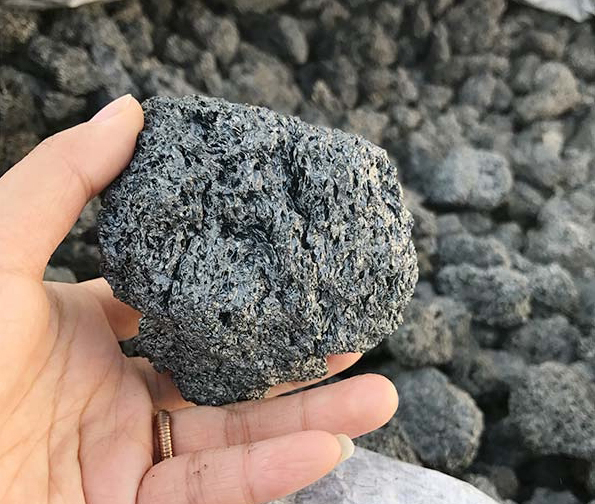
Petroleum coke is a carbon-rich byproduct of oil refining that can be used for various industrial applications. This is produced by thermally cracking crude oil. This raw coke is either fuel or anode quality, depending whether it has volatile hydrocarbons burned out or not. To make the anode grade suitable for aluminum melting, it is further processed by calcination. Other uses for calcined oil coke are to produce fertilizers, bricks and other glass products, or as an energy resource.
The aluminum industry relies on calcined petroleum coke as a raw material. The coke is then used as anodes to melt aluminum, and to transfer electricity to the pots of the smelter. The anodes, which are solid carbon materials, must have excellent electrical conductivity as well as resistance to physical or chemical degradation within the smelter. Currently, no commercially viable substitute exists for the anode coke that is made from calcined petroleum coke.
The calcination of petroleum coke involves heating the material to a high temperature in a rotary kiln, which removes the volatile materials. It is devolatilized to further remove the volatile components from the resultant calcined coke. This produces a material with low ash and high carbon content, but low sulfur, which has many uses.

Anodes are made from calcined oil coke because of its sponge-like structure. Its porous nature allows binding agents to enter the particles of coke and produce a solid, carbon-based block. The block is used to transmit electricity in aluminum melting pots. The anodes must be able to withstand the high temperatures and heavy electric currents used in aluminum smelting. The anode must have good electrical conductivity, and be resistant to both physical and chemical damages.
In order to meet the growing demand for aluminium, more and more smelters turn to petcoke calcined to manufacture their anodes. This trend is expected to continue, especially as stricter emissions limits are implemented. More and more smelters mix low S/lowV calcined pyrolysis petcoke into shaft or rotary petcoke in order to minimize supply risks while optimizing economics.
Fertilizers. Gassing the calcined petroleum coke creates ammonia as well as urea ammonium nitrogen, both of which can be used to make fertilizers. Making Bricks And Glas - Calcined petroleum coke has a low ash content, making it a good choice to manufacture bricks and glasses.
Asia Pacific dominated the global calcined coke market with a share up to 40 percent in 2019. The reason for this is due in large part to the ongoing construction of residential and commercial buildings across countries like India, China and Singapore. This growth can also be attributed to the economic reforms of recent years, infrastructure development and rising income per capita. The growing demand for housing and other buildings is driving the construction sector and thus, the calcined petroleum coke market.

Write a Message